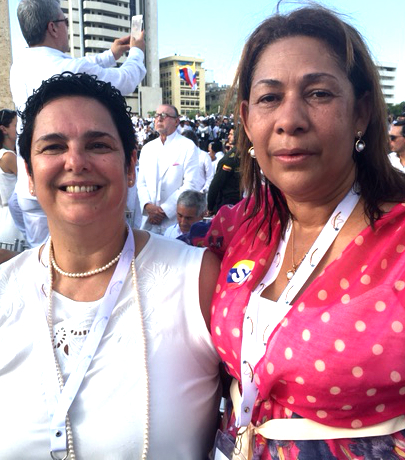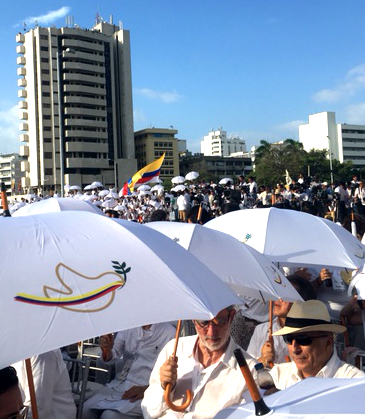Author: Lisa Haugaard
|
|
Among a sea of Colombians dressed in white in a plaza in Cartagena, I watched as President Juan Manuel Santos and FARC leader Rodrigo Londoño, alias Timochenko, signed the peace accords on September 26, 2016, using a pen made from bullets.
The accords offered the opportunity to begin to close the door on more than fifty years of conflict with the FARC, as well as nearly seventy years of political violence since the assassination of presidential candidate Jorge Eliécer Gaitán.
On October 2, a week later, by a narrow margin, Colombians voted down the peace accords in a referendum. The majority of Colombians simply did not vote.
Many who voted “No” rejected the provisions allowing FARC leaders who had committed grave violations of human rights to carry out community service and thus avoid time in jail. But other issues played a role. Some evangelical pastors organized around the “No” campaign, claiming that the accords included “an ideology of gender.” The accords stressed the role of women as victims and peace builders and included mentions of LGBTI Colombians as a group with rights. Ex-president Alvaro Uribe, ever a hardliner for war, was the leader of the “No” campaign.
If you look at the map of Colombia, however, you can see that many of the rural areas most affected by the war voted in favor of the accords. Indigenous and Afro-Colombian organizations, unions, campesino organizations, human rights defenders, and women’s organizations campaigned for peace. Of the urban cities, only Bogotá, Cali, and Barranquilla voted “Yes.” But those most heavily damaged by the war voted overwhelmingly for peace, like the Afro-Colombian community of Bojayá, where the FARC had killed many community members seeking refuge in a church.
The Caribbean coast, a Santos stronghold which would likely have voted “Yes,” was affected by strong rains from Hurricane Matthew.
But all is not lost. President Santos and the FARC leaders proclaimed their commitment to peace. The international community weighed in strongly, and President Santos received the Nobel Peace Prize. The Obama Administration continued its support. Momentum for peace was boosted by the start of talks with the ELN guerrilla group, which had not participated in the original accords.
 Two Colombian women at the Cartagena peace accord signing ceremony. Photo by Lisa Haugaard. |
Our Colombian partners—victims organizations, human rights groups, faith organizations—are organizing to press onward with the peace negotiations. They ask us to accompany them.
The way forward is complex. Colombians need to decide if they will try to achieve peace through their Congress, challenge the referendum’s results given the new charges of the “No” campaign’s deceptive tactics and the adverse weather, adapt the accords, or hold a new referendum.
Our role is more simple. We need to stand by Colombians working for peace as they find their way forward. And we must keep our government, including the next administration, squarely on the path for peace after so many years of backing Colombia’s deadly war.
Finally, we have to stand with the victims. As a woman sitting by me at the signing ceremony in Cartagena said, “It’s not us, the victims, who want to continue this war. We who have suffered so much want to see peace.”
Lisa Haugaard is the Executive Director of the Latin America Working Group.


